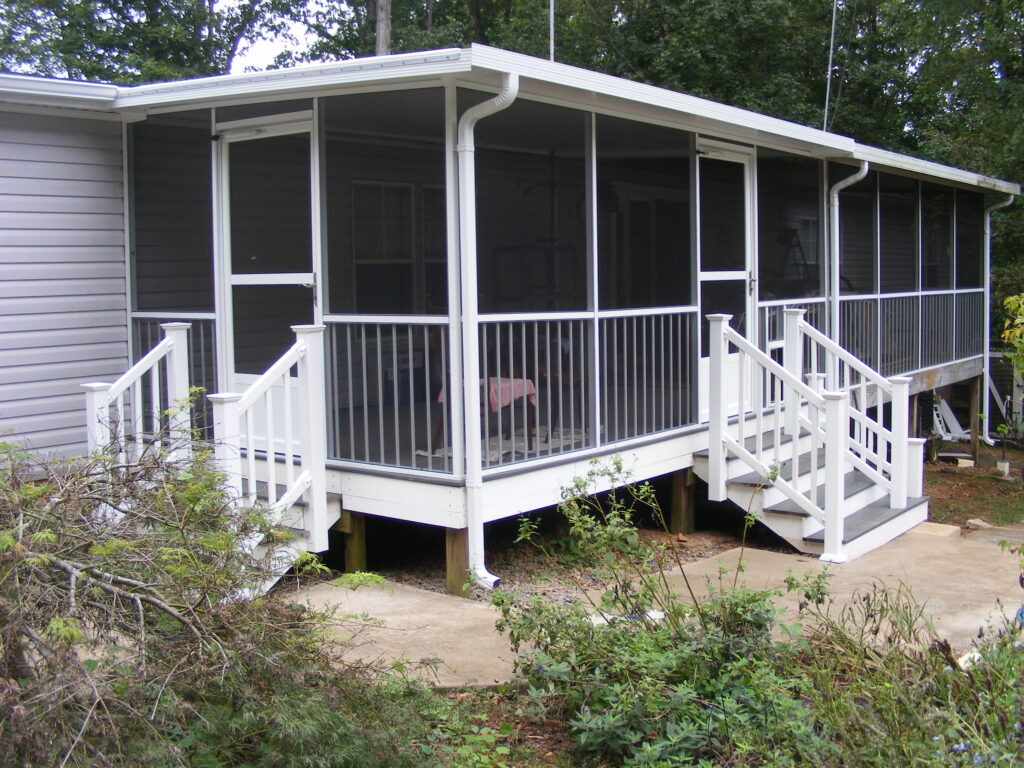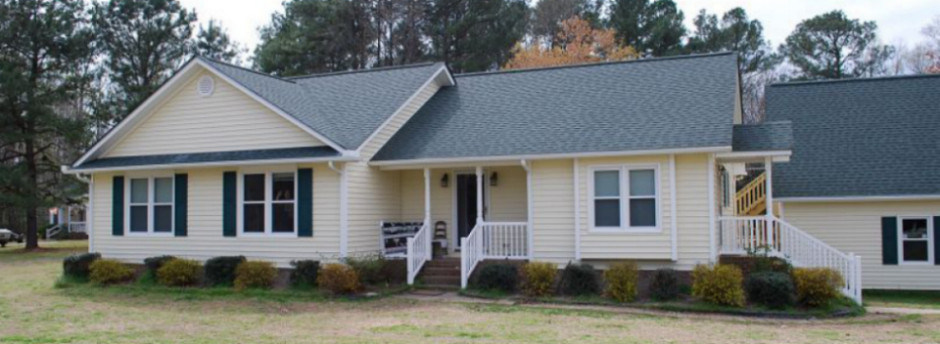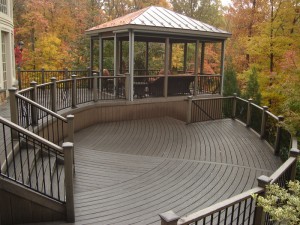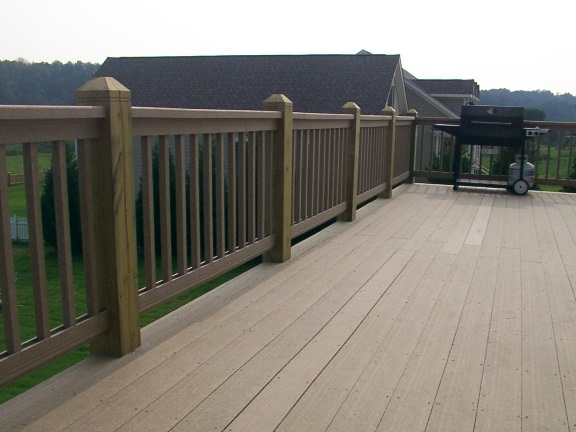Early Decks
For some perspective on the evolution of decks lets look back a few decades. When I was working with my older brother back in the 80’s treated decks became all the rage. They gained so much popularity that we were tearing out perfectly good brick patios to build decks or just building over the patios. Housing contractors loved them because they maintained nearly the same value on a new home as traditional brick patios at a reduced cost. Back then building codes on decks were practically non existent, leaving a wide latitude in design and construction.
Even though the treated lumber used to build decks was rated for 30 or 40 years, people seldom considered them to be a permanent part of the house. Decks initially were not built on footings as they are today. In hard clay the support posts were often just set in the hole and filled in, alternatively, half of a solid 4″ concrete block was placed in the bottom of the post hole. On several occasions after we started pouring concrete footings, we had clients express dismay at the thought of having to someday dig up all the concrete when the deck was replaced.
Evolving Expectations

Over time lots of people decide they wanted more from these decks, choosing to close them in or install hot tubs on them. This added loads that many decks could not safely to carry. During this same time, there were multiple instances of decks collapsing from being over crowded and no doubt inadequately built. Now codes have changed so that most decks can safely support these greater loads . The down side is that both labor and material expenses have increased significantly to satisfy modern code requirements.
Industry Changes
More recently, because of environmental concerns, the methods of treating lumber have changed along with the materials used in the treatment process. (See Hands on Deck for some insights on deck treatment processes.) The implementation of copper based wood treatments have necessitated the use of vinyl flashing and precludes the use of all flashing made from aluminum, which quickly corrodes when in contact with the copper infused wood. The type of fasteners used with new treated wood is also critical because of corrosion concerns.
Due to smaller tree size and the speed which it is brought to market, lumber is less stable than when it was milled from larger trees. This manifests in three ways. The first is a greater tendency to warp, which is overcome by timely installation. The second is seen in floor boards, that experience rapid, uneven, drying once they are installed. Because one side of the boards face the sun while the other is shaded, they dry and shrink at different rates on the top and bottom. This may lead to cracking around knots or areas with nonuniform grain, rendering afflicted boards unusable. This problem is prevalent in decks built during summer months. The third stability issue is shrinkage in the length of floor boards that may create unsightly gaps. Replacement of the errant boards is the appropriate remedy.
The evolution of decks creates new problems and brings new solutions
Treated wood is available in two types, above grade and ground contact. Tags stapled to the end of each board indicates the rating of that board. The determining factor between each is the concentration of treatment chemicals with ground contact rated boards having a higher percentage. In the past, arsenic treated lumber rated for above grade could last 15 years or longer in high moisture applications. Newer above grade treated lumber may start to decay in as little as two years if exposed to persistent moisture. Additionally deck designs that trap moisture may contribute to premature degradation of the floor boards or framing.
As the character of wood and the methods of it’s preservation have changed, so have industry best practices. Installing flashing tape on the tops of joists and girders is fast becoming an industry best practice. This applies to new decks and older decks that are being re-floored. Protecting the wood floor and rails, by regular application of a sealant also extends the life of a deck.
With the evolution of decks many are now being floored with composite or vinyl products. Vinyl and composite rails are also popular. Features like a very uniform appearance, and the ability to create curved floors have expanded the design possibilities tremendously. These modern products contribute to some of the most visually appealing and maintenance free decks built today.
Wood’s Home Maintenance service builds quality decks custom designed to meet your needs. We can also supply CAD drawings suitable for submission to the inspections dept. Let us get started on your project today!





